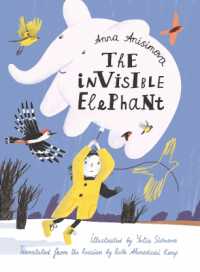Full Description
Reinforcing best practice techniques, the second edition of this specialist guide for the assessment of learners with dyslexic-type difficulties includes:
- a new chapter on The Implications of Co-existing Specific Learning Difficulties
- updates to legislation including the SEND Code of Practice
- updates to specific diagnostic tests
- examples of interpreting test profiles
- photocopiable resources available to download from the website
This comprehensive guide enables teachers to understand a range of approaches to the assessment of children with dyslexic-type difficulties. It is an essential companion for those training to be specialist teachers of learners with dyslexia and a useful resource for all SENCOs, and teachers new or experienced.
Contents
PART I: Dyslexic-Type Difficulties and Assessment: Setting the Context
Chapter 1: Dyslexic-Type Difficulties: Implications for Assessment
Chapter 2: The Implications of Co-existing Specific Learning Difficulties
Chapter 3: Purposes and Forms Of Assessment
Chapter 4: Legislation, Policy and Practice
Part II: Starting the Process
Chapter 5: Identification and Screening
Chapter 6: Gathering Information from Others
Part III: Informal Approaches to Assessment
Chapter 7: Informal Approaches: Assessing Diffuculties in Reading
Chapter 8: Informal Approaches: Assessing Spelling Difficulties
Chapter 9: Informal Approaches: Assessing Difficulties in Handwriting
Chapter 10: Assessing Alphabetic Knowledge
Chapter 11: Assessing Cognitive Processing Skills
Chapter 12: Assessing Difficulties in Mathematics
Part IV: Formal Assessment
Chapter 13: Principles and Concepts of Psychometrics
Chapter 14: Standardised Assessment of Reading
Chapter 15: Standardised Assessment of Spelling and Handwriting
Chapter 16: The Assessment of Underlying Ability
Chapter 17: Standardised Assessment of Cognitive Processing Skills
Chapter 18: Standardised Assessment of Mathematics and Dyscalculia
Part V: Managing the Assessment Process
Chapter 19: Conducting Assessment
Chapter 20: Writing an Assessment Report
Chapter 21: Assessment by Other Professionals







